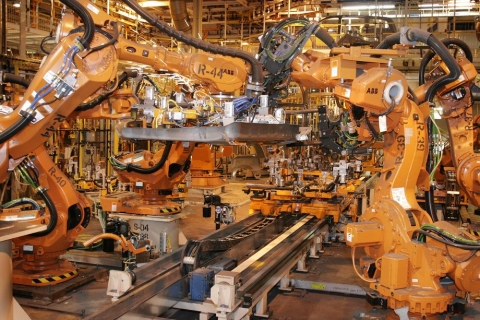Why manufacturing jobs are coming back to the U.S. — even as companies buy more robots
In the long run, many think that automation and robotics are going to replace a significant percentage, if not the overwhelming majority, of manufacturing jobs. That’s certainly a possibility. But for now, even as companies add more robots to North American factory floors, the number of human jobs in manufacturing is also on the rise.
In April, 12.4 million Americans worked in manufacturing, according to the U.S. Bureau of Labor Statistics. That’s up by about 25,000 jobs from a year prior, and almost a million from early 2010. But it’s still down by about one third, or more than six million jobs, from 1980.
One reason for the uptick: Last year, for the first time in decades, more manufacturing jobs came back to the United States than left, according to data compiled by the Reshoring Initiative, a firm that works to bring jobs back to the U.S.
In 2016, there was a net gain of more than 25,000 jobs. That reflects a loss of about 50,000 jobs that left the country, combined with a gain of about 77,000 jobs that returned to the U.S. or are a result non-U.S. companies investing in U.S. factories, according to the report.
The bulk of reshored jobs — about 60 percent from 2010 through 2016 — came from China, according to the report. Labor has become more expensive in China than in the past, with Chinese wages going up 12 percent to 15 percent a year for the past 15 years, according to Harry Moser, founder of the Reshoring Initiative.
The automotive industry has brought the most jobs back to the U.S., followed by makers of electronic components and appliances. Those are industries, according to the report, “focused on products whose size and weight suggest offshoring never offered great total cost savings.”
But there’s still the question of how the increasing use of automation could eventually play an even bigger role in these trends. In the first quarter of 2017, North American companies bought 32 percent more robots than the same period last year, according to data from the Robotic Industries Association. The reason for the increase? Robots have become cheaper.
....




